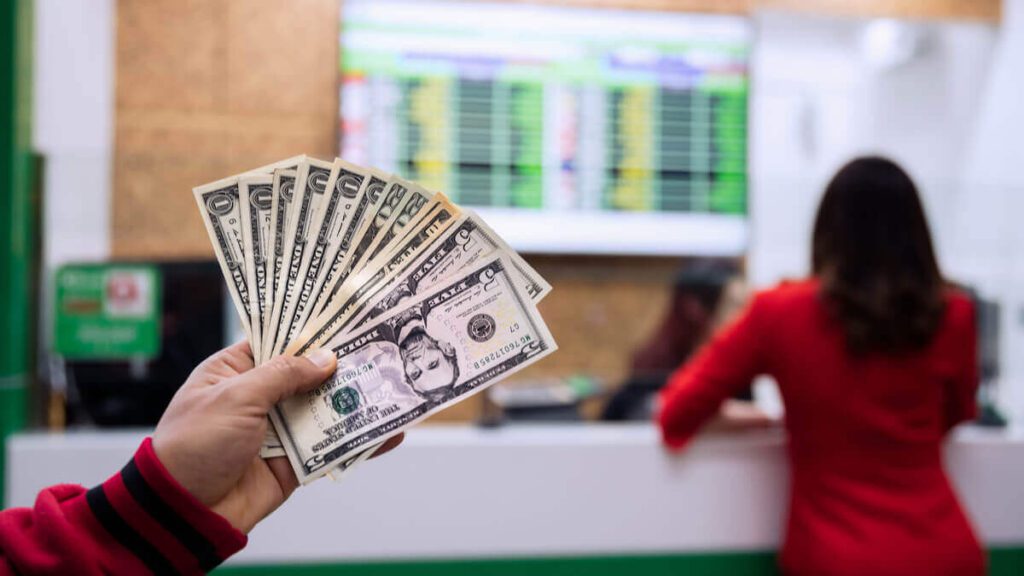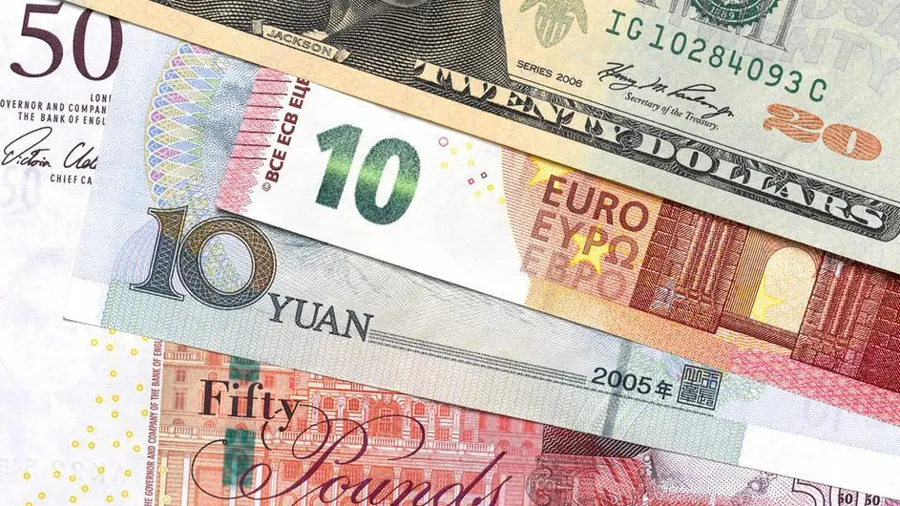As the world gradually opens up to travel enthusiasts after a hiatus of more than two years, the eagerness to embark on international adventures is palpable. However, savvy travelers understand the importance of optimizing their travel budget and getting the most value for their money. One strategic approach to achieve this is by gaining a comprehensive understanding of how currency exchange works, ensuring that you don’t end up paying unnecessary fees during the process.

Before you set foot on foreign soil, it’s crucial to arm yourself with knowledge – a classic case of “know before you go.” The following tips will serve as your guide to navigating the intricacies of currency exchange, empowering you to secure the best rates and make the most informed financial decisions during your international travels.
Firstly, familiarize yourself with the basics of currency exchange. Understand the prevailing exchange rates and how they fluctuate, as these variations can significantly impact the overall cost of your transactions abroad. Keeping abreast of currency trends allows you to identify opportune moments to exchange your money.
Consider utilizing reputable currency exchange services or platforms that offer competitive rates. Whether it’s at the airport, a local bank, or dedicated currency exchange offices, compare the rates offered by different providers to ensure you are getting the best deal. Additionally, some online platforms provide real-time exchange rate information, enabling you to make timely decisions.
Another key consideration is minimizing transaction fees. Certain financial institutions may charge fees for currency conversion, withdrawals, or card transactions abroad. Research and choose financial products that offer favorable terms for international travel, such as credit cards with low foreign transaction fees or fee-free ATM withdrawals.
Opt for local currency whenever possible to avoid dynamic currency conversion (DCC) fees. Some merchants may offer to convert your purchase into your home currency, but this convenience often comes with additional costs. Choosing to pay in the local currency helps you bypass unnecessary fees and potentially secure a better exchange rate.
In essence, arming yourself with knowledge about currency exchange empowers you to make financially sound decisions during your international travels. By staying informed, comparing rates, minimizing fees, and opting for local currency, you can ensure that your travel budget goes further, allowing you to fully savor the experiences that await you abroad. As the world becomes your oyster once again, these currency exchange insights will serve as your passport to financial prudence and enhanced travel enjoyment.
Contents
ToggleHow Does Currency Exchange Work?
Picture the currency exchange rate as akin to purchasing produce at your local grocery store – a concept that can make understanding it more relatable. Let’s consider buying three pounds of oranges for $4.00 one day and discovering the same quantity priced at $2.79 a week later. The analogy is straightforward: your dollar holds more value (yielding more oranges) when the price is $2.79, but its purchasing power weakens when the cost increases to $4.00.
At its core, a currency exchange rate represents the value of one country’s currency relative to another country’s currency. Similar to the fluctuating prices of produce, the value of the U.S. dollar in comparison to foreign currencies like those of France, Canada, and Mexico tends to vary. Much like checking the ever-changing prices of oranges, staying abreast of currency exchange rates is essential. These rates can undergo minute-to-minute fluctuations, although it’s important to note that most banks typically update their rates once each business day.
Given the dynamic nature of exchange rates, it becomes imperative to optimize your currency exchange strategy, aiming to obtain the maximum amount of foreign currency for your U.S. dollar. This involves securing the most favorable exchange rates while minimizing associated fees. Just as a savvy shopper seeks the best deals at the grocery store, a savvy traveler seeks the most advantageous rates in the realm of currency exchange.
To achieve this, consider comparing rates offered by various currency exchange providers, whether at the airport, local banks, or dedicated exchange offices. Online platforms also offer real-time information on exchange rates, allowing you to make well-informed decisions. Additionally, be mindful of transaction fees, as some financial institutions may impose charges for currency conversion, withdrawals, or international transactions. Choosing financial products with favorable terms for international travel, such as credit cards with minimal foreign transaction fees, can contribute to cost savings.
In summary, approaching currency exchange with the mindset of a discerning shopper navigating the grocery store allows you to comprehend the nuances and fluctuations inherent in exchange rates. By staying informed, comparing rates, and minimizing fees, you can ensure that your U.S. dollar stretches further, enabling you to make the most of your international travels. As you navigate the landscape of currency exchange, consider it a strategic shopping excursion where each decision contributes to optimizing the value of your financial resources.
Where to Exchange Currency
Embarking on international adventures is undoubtedly an exciting prospect, but managing your finances wisely during these journeys is equally crucial. To ensure you save the most on currency exchange rates and steer clear of potential fees for international transactions, consider the following tips as your roadmap for planning your next trip abroad. By implementing these strategies, you not only maximize the money in your pocket but also minimize expenditures on unnecessary fees, leaving you with more resources to indulge in your globetrotting escapades.
Firstly, stay informed about currency exchange rates. Familiarize yourself with the current rates and monitor any fluctuations that may impact your travel budget. Utilize online platforms that provide real-time exchange rate information, empowering you to make timely decisions and capitalize on favorable rates. Knowledge is your best ally when navigating the dynamic landscape of currency exchange.
Next, choose your currency exchange provider wisely. Whether you’re at the airport, a local bank, or a dedicated exchange office, compare the rates offered by different providers. Opt for reputable services that offer competitive rates, ensuring that you get the most value for your money. Keep in mind that some online platforms may also provide advantageous rates, allowing you to explore a range of options beyond traditional brick-and-mortar establishments.
Minimizing transaction fees is another key consideration. Research financial products that offer favorable terms for international travel. Credit cards with low foreign transaction fees or fee-free ATM withdrawals can be particularly beneficial. These options help you avoid unnecessary charges and enhance the overall efficiency of your financial transactions abroad.
Consider exchanging currency in advance to secure favorable rates. Planning ahead allows you to choose the most opportune moment for currency exchange, potentially saving you money compared to last-minute transactions. Additionally, keeping a modest amount of local currency on hand can be convenient for small expenses upon arrival.
Lastly, be cautious about dynamic currency conversion (DCC). When making purchases abroad, some merchants may offer to convert the transaction into your home currency. While this may seem convenient, it often comes with additional fees. Opting to pay in the local currency helps you avoid DCC fees and may even lead to a more favorable exchange rate.
In conclusion, meticulous planning and informed decision-making are essential components of optimizing your currency exchange experience during international travel. By staying updated on exchange rates, choosing reputable providers, minimizing fees, exchanging currency in advance, and being mindful of DCC, you set the stage for a financially prudent journey. With more money in your pocket and less spent on fees, you’ll have the freedom to fully immerse yourself in the enriching experiences that global travel has to offer.
1. Get Cash at Your Bank Before Leaving the US
When it comes to minimizing currency exchange fees for your international travels, a proactive visit to your bank or credit union before departing the U.S. can be a strategic move. This approach allows you to exchange dollars for the currency of your destination with the potential benefit of avoiding additional fees beyond the exchange rate. Depending on the countries you plan to visit, major U.S. banks, including Wells Fargo and Bank of America, typically offer a range of foreign currencies without imposing extra charges.
For instance, Wells Fargo stands out by providing access to 70 currencies for use in over 100 countries, while Bank of America extends its currency exchange services to more than 100 countries. This extensive coverage ensures that travelers have a convenient and reliable option to secure foreign currency tailored to their destination.
The process of obtaining foreign currency from your bank is flexible. You can either visit your local bank branch for in-person cash exchanges or take advantage of online or phone ordering services with the convenience of having the currency delivered to your home. The availability of same-day exchanges varies depending on factors such as your bank, location, and the specific currency needed. While some currencies may be readily accessible, others, particularly those less frequently requested, may require a few days or more of advance notice.
According to John Sellers, rewards executive at Bank of America, customers who choose to order currency through their own bank benefit from authenticity assurance and the assurance of receiving the best legal rate. Exchange rates, constantly subject to fluctuations, are determined by factors such as market conditions and rates charged by other financial institutions. This dynamic approach ensures that customers receive the most favorable rates at the time of their currency exchange.
In essence, leveraging your bank’s currency exchange services not only provides you with the convenience of obtaining foreign currency in advance but also affords you the peace of mind that comes with authentic and competitively priced transactions. As exchange rates remain a fluid aspect of international travel, aligning with your bank’s expertise ensures a seamless and trustworthy experience, allowing you to focus on the excitement of your upcoming journey with confidence.
2. Avoid Currency Exchange Kiosks at Airports
Navigating the complexities of currency exchange, especially when time constraints come into play, can lead travelers to consider the convenience of airport kiosks or currency exchange counters. While these options offer on-the-spot solutions, it’s crucial to recognize that their convenience often comes at a cost—specifically, less favorable exchange rates compared to your home bank.
Imagine you’re gearing up for a trip to the United Kingdom, and your bank extends an exchange rate of £72 per $100. Opting for the airport kiosk, however, might only yield £67 per $100, resulting in an additional expense manifested as a diminished amount of pounds for your dollars. In practical terms, choosing your home bank over the airport kiosk would leave you with an extra £5 in your pocket.
Beyond less favorable exchange rates, airport kiosks may also impose higher fees, sometimes concealed within the conversion rates, further diminishing the value of your currency exchange. For those embarking on last-minute journeys and urgently requiring cash in a foreign currency, the convenience of airport kiosks might justify the additional expense. However, for travelers with the luxury of planning ahead, steering clear of airport kiosks and exploring alternative options is a prudent approach.
In the realm of currency exchange, forethought can translate into substantial savings. Online platforms and local banks often provide competitive rates that surpass those offered at airport kiosks. By prioritizing exchanges at your home bank or reputable local institutions, you empower yourself to make financially savvy decisions that contribute to a more cost-effective and enjoyable travel experience.
In conclusion, the allure of convenience at airport kiosks should be weighed against the financial implications of less favorable rates and potentially higher fees. Planning ahead and opting for alternatives to airport kiosks allows you to retain more of your funds for the experiences that make your travels memorable. Every thoughtful decision in currency exchange contributes to a more economical and rewarding journey, making the most of your international adventures.
3. Pay by Card, but Watch Out for Foreign Transaction Fees
As you settle into your destination, a strategic decision many travelers face is whether to rely on foreign cash or leverage credit and debit cards for transactions. However, this choice introduces another financial consideration: foreign transaction fees.
Banks and the type of card in your wallet play pivotal roles in determining the foreign transaction fees you might incur, with some credit or debit cards imposing fees of up to 3% on every international purchase. To put it into perspective, envision spending a total of $5,000 on your trip using a card that applies a 3% foreign transaction fee—resulting in an additional $150 in charges. Certainly not the ideal scenario for budget-conscious travelers.
To sidestep these stealthy fees, it’s essential to delve into the fine print on your bank’s or credit card’s website before embarking on your travels. Reading the terms and conditions will unveil any potential fees associated with foreign transactions. Additionally, a proactive step is to contact your bank directly, seeking clarity on whether your specific card or account incurs foreign transaction fees.
For those with the luxury of time before their journey, exploring credit card options that don’t impose foreign transaction fees can be a game-changer, especially if the card comes with enticing travel rewards. Applying for a credit card tailored to international travel, ideally one with lucrative rewards, not only shields you from additional charges but can also enhance your overall travel experience.
In essence, being informed and proactive in managing foreign transaction fees requires diligence and strategic decision-making. Whether it’s reviewing the terms of your existing cards, inquiring with your bank, or exploring new credit card options, these efforts contribute to a more cost-effective and enjoyable international travel experience. By minimizing or eliminating foreign transaction fees, you ensure that every dollar spent goes towards creating cherished memories rather than being allocated to unforeseen financial hurdles.
4. Pay in the Local Currency to Avoid Currency Conversion Fees
When navigating international transactions, an important consideration often arises: the choice between paying in the local currency or U.S. dollars. While not every purchase provides this option, it’s a subtle yet significant opportunity to save on fees.
In such instances, it’s advisable to opt for paying in the local currency. If you choose to pay in U.S. dollars, you risk incurring an additional currency conversion fee, coupled with the likelihood of receiving an unfavorable exchange rate. Despite the merchant’s point-of-sale system possibly framing the choice to pay in dollars as a convenient option, it, in fact, can lead to unnecessary extra costs.
To unravel the dynamics at play, consider this scenario: Imagine making a purchase and being presented with the choice to pay in the local currency or U.S. dollars. If you opt for U.S. dollars, you might inadvertently subject yourself to a less advantageous exchange rate and incur fees that could have been avoided by selecting the local currency. In essence, the seemingly convenient choice could result in unnecessary expenses, subtly eroding the overall value of your transaction.
To make the most informed decision, remain vigilant during your international transactions and actively choose to pay in the local currency whenever the option presents itself. This small yet impactful decision aligns with the broader strategy of minimizing fees and optimizing the value of your money during your travels.
In conclusion, the choice between paying in the local currency or U.S. dollars is a nuanced aspect of international transactions that can significantly impact your overall expenses. By consistently choosing the local currency, you assert control over potential fees and exchange rates, ensuring that your financial resources are allocated wisely. Stay attentive to these subtleties, and you’ll find yourself making savvy financial choices that contribute to a more cost-effective and enjoyable travel experience.
5. Know Your ATM Fees and Limits
When it comes to accessing cash abroad through foreign ATMs, securing a favorable exchange rate is only one part of the equation. It’s equally crucial to familiarize yourself with your bank’s policies regarding fees and daily withdrawal limits before utilizing these machines. Taking a proactive approach can help you optimize your travel funds and minimize any unforeseen expenses.
Initiating this process involves reaching out to your bank and inquiring about the daily ATM withdrawal limits associated with your account. Understanding these limits is essential as they can impact your ability to withdraw sufficient funds during your travels. If you find that your daily withdrawal limit is restrictive, consider requesting an increase from your bank, enabling you to access the necessary funds conveniently.
Additionally, it’s paramount to be aware of any fees your bank may impose when using an out-of-network ATM abroad. Unchecked, these fees can accrue and diminish the overall value of your withdrawals. By proactively seeking information on potential fees, you empower yourself to make informed decisions, avoiding unwarranted financial setbacks during your travels.
An important caveat to bear in mind is that some international ATMs may have lower withdrawal limits compared to your bank’s stated limit. For instance, while your bank might authorize a daily withdrawal limit of $500, the foreign ATM network or bank may restrict you to withdrawing only $300. To circumvent potential inconveniences, strategic planning becomes essential. Anticipating your cash needs and adjusting your expectations based on the limitations of the foreign ATMs can ensure a seamless and stress-free experience during your trip.
In essence, the key to a smooth and cost-effective cash withdrawal experience abroad lies in preemptive measures. By understanding your bank’s policies, negotiating reasonable withdrawal limits, being cognizant of potential fees, and aligning your expectations with the constraints of foreign ATMs, you position yourself to make the most of your financial resources during your travels. Strategic planning not only ensures access to the funds you need but also contributes to an overall enjoyable and financially savvy travel experience.
6. Use International Banking Apps
For seasoned globetrotters, integrating an international banking app into their financial toolkit can be a game-changing strategy. Notable options such as Wise (formerly TransferWise), Revolut, and similar platforms offer a seamless and efficient means to navigate the complexities of managing money across borders. These apps redefine the conventional banking experience, providing users with a range of features designed to enhance the convenience and flexibility of international financial transactions.
One of the key advantages of utilizing international banking apps is the ability to maintain a multiple currency account. This functionality proves invaluable for individuals with diverse international financial engagements. Whether you’re a frequent visitor to Canada, Mexico, or find yourself basking in the Spanish sun every summer, a multiple currency account allows you to hold funds in various currencies. This strategic approach mitigates the impact of currency exchange rate fluctuations, offering a level of financial stability and foresight that aligns with the dynamic nature of international travel.
Imagine the convenience of having dedicated funds in Canadian dollars for your trips to Canada or Mexican pesos for your excursions south of the border. This targeted approach not only streamlines your financial management but also shields you from the uncertainties of currency exchange rates. With a multiple currency account at your disposal, you’re poised to navigate the intricacies of international spending with confidence, ensuring that your money works for you, rather than being subject to the whims of market volatility.
Furthermore, international banking apps often provide users with the capability to effortlessly transfer money to accounts in different countries. This functionality eliminates the hassle associated with traditional cross-border transactions, offering a quick and cost-effective alternative. Whether you need to settle bills, send funds to family abroad, or make investments in foreign currencies, these apps facilitate seamless money transfers, fostering financial connectivity on a global scale.
In conclusion, embracing the capabilities of international banking apps is a strategic move for those who traverse borders frequently. The convenience of multiple currency accounts and efficient cross-border money transfers empowers travelers to take control of their finances, mitigating risks associated with currency volatility and simplifying the intricacies of managing money across diverse international landscapes. As the world becomes increasingly interconnected, these innovative financial tools serve as invaluable companions for the modern international adventurer, ensuring that their financial journey is as smooth and rewarding as their physical one.
Banks That Exchange Foreign Currency for Free
Navigating the terrain of foreign currency exchange at U.S. banks unveils a landscape of potential cost-saving opportunities, albeit with certain considerations. Understanding the nuances of your bank’s policies can empower you to make informed decisions, ensuring that your currency exchange experience aligns with your financial objectives.
In the realm of U.S. banking, it’s not uncommon to find institutions willing to exchange USD for foreign currencies without imposing direct fees. However, these seemingly fee-free exchanges often come with specific conditions that warrant attention. Take, for instance, Bank of America, where customers can exchange foreign currencies at no additional charge—but there’s a catch. This perk applies exclusively to orders of $1,000 or more. Transactions falling below this threshold incur a $7.50 delivery fee for foreign currency orders. Unpacking these stipulations underscores the importance of familiarity with your bank’s policies to navigate the fine line between cost-saving and potential fees.
A similar scenario unfolds at TD Bank, where U.S. dollar to foreign currency exchanges can be fee-free for customers, but the details matter. Qualifying account types, such as TD Premier Checking, grant customers exemption from foreign exchange fees. On the flip side, customers with TD Convenience Checking may encounter fees. This highlights the significance of aligning your account type with your currency exchange needs. A proactive approach involves reaching out to your bank to gain clarity on whether they offer fee-free foreign currency exchanges and the specific conditions you must meet to unlock this benefit.
As you embark on this financial exploration, engaging in a candid conversation with your bank becomes a strategic step. Inquire about their policies, understand any potential limitations, and ascertain the eligibility criteria for fee-free foreign currency exchanges. By doing so, you equip yourself with the knowledge needed to make decisions that optimize cost-effectiveness and align with your unique financial circumstances.
In conclusion, while the prospect of fee-free foreign currency exchanges at U.S. banks is enticing, the devil is in the details. Navigating these intricacies involves a blend of awareness, proactive communication with your bank, and a keen understanding of the conditions attached to fee exemptions. By unraveling the complexities of your bank’s policies, you can embark on currency exchanges that not only save costs but also seamlessly align with your financial goals. As the saying goes, knowledge is power, and in the realm of foreign currency exchange, it’s the key to unlocking a world of financial efficiency and strategic decision-making.
Where to Get Foreign Currency Internationally
When venturing beyond U.S. borders, securing foreign currency becomes a practical necessity, and navigating the options can significantly impact your travel finances. Among the myriad choices, ATMs emerge as a traveler’s ally, offering a convenient and cost-effective means to obtain bills for local expenditures. Understanding the nuances of utilizing ATMs abroad can unlock a world of financial efficiency, ensuring that you make the most of your international travels.
One of the key advantages of using ATMs abroad lies in the competitive exchange rates they typically provide. Unlike some currency exchange services that may levy unfavorable rates, ATMs often offer rates that closely align with the prevailing market values. This translates to better value for your money, allowing you to stretch your travel budget further.
Optimizing your use of ATMs involves strategic planning regarding the withdrawal amounts. While it might be tempting to make smaller withdrawals to manage expenses, it’s worth considering the cumulative impact of ATM fees. Many financial institutions charge fees per transaction, making multiple small withdrawals a less economical choice. Instead, withdrawing a larger sum in a single transaction can help minimize fees, maximizing the value of each withdrawal.
Moreover, if you find yourself in need of currency for a country different from your current location, seeking out major banks can be a savvy move. Large banks often offer comprehensive currency exchange services, allowing you to convert your cash into the desired currency with relative ease. This approach is particularly beneficial when you’re traversing regions with distinct currencies, ensuring that you’re well-equipped to navigate the local economy seamlessly.
As you embark on your international adventures, cultivating an awareness of ATM usage strategies becomes integral to a financially savvy travel experience. By leveraging ATMs for local currency needs, optimizing withdrawal amounts, and strategically choosing banking facilities for currency exchange, you position yourself to make the most of your travel funds. Traveling outside the U.S. becomes not just an exploration of new landscapes but also a journey in financial acumen, where informed choices lead to enhanced value and a more enriching travel experience.







